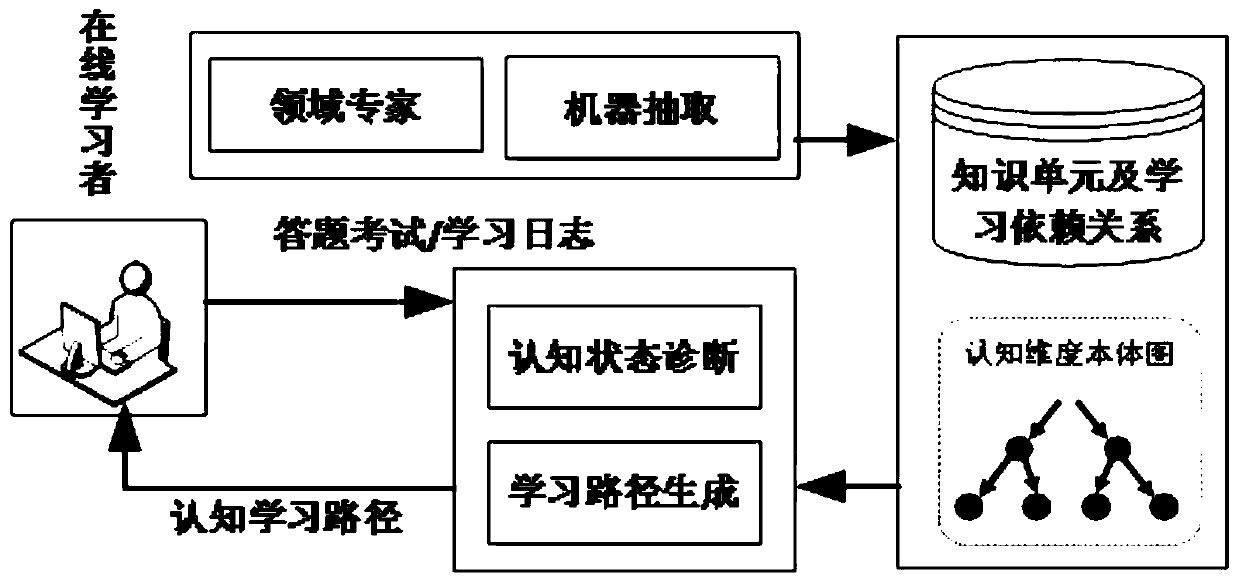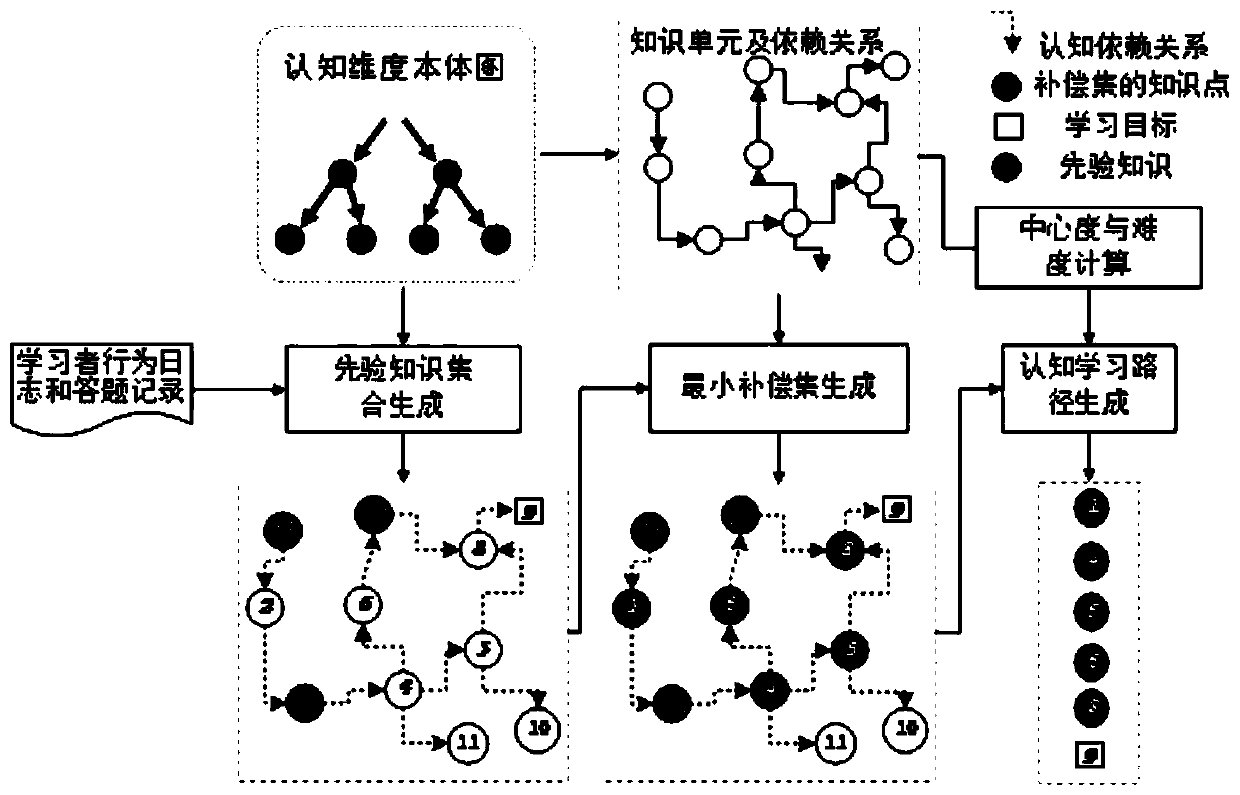Learning cognitive path generation method based on cognitive map
A path generation and map technology, applied in the field of learning and cognitive path generation based on cognitive maps, can solve the problems of single category, poor self-adaptation, and low personalization of cognitive paths
- Summary
- Abstract
- Description
- Claims
- Application Information
AI Technical Summary
Problems solved by technology
Method used
Image
Examples
Embodiment 1
[0074] A method for generating a learning cognitive path based on a cognitive map is characterized in that it comprises the following steps:
[0075] S1. Construction of the cognitive map data model, which defines the basic elements of the cognitive map. The basic elements of the cognitive map include the cognitive dimension of the course, the knowledge unit of the course and the learning dependency relationship, and the cognition of the course using the RDF data model Representation and organization of dimensions, knowledge units, and learning dependencies among knowledge units;
[0076] S2. Given a specific course, extract the knowledge units in the course from the teaching text resources of the open domain, mine the learning dependencies between the knowledge units, and combine the cognitive ontology graph to generate the cognitive graph of the given course, Use RDF graphs for representation and storage;
[0077] S3. Based on the cognitive map of a given course, collect learners'...
Embodiment 2
[0081] This embodiment describes step S1 in detail, which is specifically as follows:
[0082] S101, the cognitive map can be expressed as a two-tuple
[0083] among them, Represents the cognitive dimension ontology map composed of cognitive dimensions in the cognitive map;
[0084] Represents the knowledge unit data graph formed by the knowledge unit and the learning dependency relationship in the cognitive map;
[0085] S102. For the ontology map of the cognitive dimension Can be expressed as a two-tuple
[0086] among them, It is a collection of cognitive dimensions, which mainly includes six categories: memory, understanding, application, analysis, evaluation, and creation. Each category is divided into several subcategories;
[0087] It is a collection of relationships between cognitive dimensions, including inheritance and or subordination;
[0088] S103. For the knowledge unit data graph Can be expressed as a two-tuple
[0089] among them, Represents the collection of know...
Embodiment 3
[0094] This embodiment describes step S2 in detail, which is specifically as follows:
[0095] S201. Collect part of the text sequence of the course teaching, take the sentence as the basic unit, expressed as Where k represents the total number of sentences that appear in the teaching text sequence; then organize teachers to label each sentence and mark the knowledge unit, otherwise it is marked as a non-knowledge unit;
[0096] S202. Generate a feature vector x corresponding to each sentence through the feature selection module i , Get the characteristic expression of the entire teaching text sequence Where d represents the dimension of each sentence feature vector;
[0097] S203: Given a marked sentence sequence and feature vector;
[0098] Among them, the tags of each sentence marked by the teacher together constitute the tag set of the sentence, expressed as Where y i ∈{+1,-1} indicates whether the sentence is a knowledge unit;
[0099] S204, use classification algorithms (such a...
PUM
 Login to View More
Login to View More Abstract
Description
Claims
Application Information
 Login to View More
Login to View More - R&D
- Intellectual Property
- Life Sciences
- Materials
- Tech Scout
- Unparalleled Data Quality
- Higher Quality Content
- 60% Fewer Hallucinations
Browse by: Latest US Patents, China's latest patents, Technical Efficacy Thesaurus, Application Domain, Technology Topic, Popular Technical Reports.
© 2025 PatSnap. All rights reserved.Legal|Privacy policy|Modern Slavery Act Transparency Statement|Sitemap|About US| Contact US: help@patsnap.com



